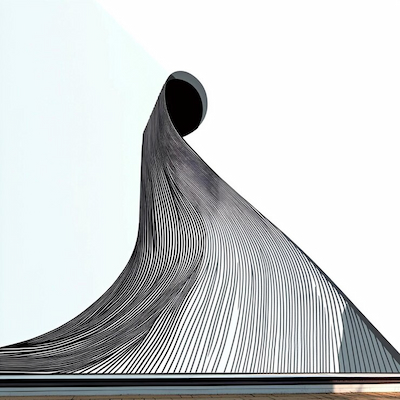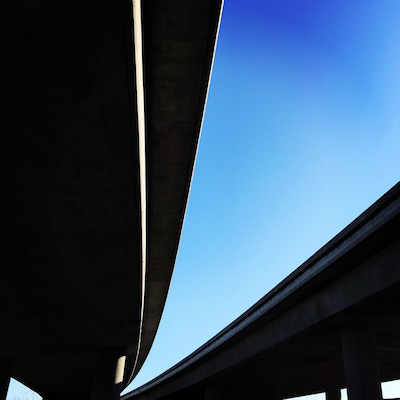
The modern architecture field goes beyond the act of building—it becomes an artistic expression that reflects a society’s culture, values, and technological advances. Oscar Niemeyer, one of the most renowned Brazilian architects, is a true icon of this movement, famous for his curved, gravity-defying forms. His works not only transformed Brasília’s skyline but also influenced architects and artists around the world. The beauty of his creations lies in how he integrates nature and functionality in a harmonious dialogue, creating spaces that are both aesthetic and practical.
Niemeyer believed that architecture should reflect human freedom and expression. His flowing curves evoke feelings of movement and lightness, contrasting with the rigid lines of earlier architectural styles. Through his vision, he did more than design buildings—he helped shape the identity of a nation. The modern architecture of Oscar Niemeyer is therefore a testament to how art and technique can unite to create inspiring and emotional spaces.
How Curves Work in Oscar Niemeyer’s Architecture
The curves in Oscar Niemeyer’s architecture are an essential element that defines his unique style. From the beginning of his career, Niemeyer explored how organic shapes could be used to create spaces that were not only functional but emotionally impactful. These curves are more than just aesthetic choices—they form a dialogue between the building and its surroundings, allowing the architecture to integrate naturally into the landscape. This unconventional approach is one reason his works are so memorable and influential.
The construction of these curves is often made possible through advanced technology, especially Niemeyer’s innovative use of reinforced concrete. This material allowed him to create continuous, fluid surfaces that not only defy gravity but offer a new perspective on the relationship between form and function. Curves guide the viewer’s gaze and create a natural flow in and around spaces, offering a sensory experience unlike any other.
In addition, curves in Niemeyer’s work hold symbolic meaning. They represent a quest for freedom and individual expression, echoing the core principles of modernism. Each curve has a purpose—whether to cast shadow, direct natural light, or simply add beauty. This careful attention to detail is a hallmark of Niemeyer’s work, reflecting his ability to translate abstract concepts into tangible spaces.
Ultimately, Niemeyer’s curves are an invitation to contemplation. They spark the imagination and challenge traditional perceptions of space and form. Rather than buildings that impose themselves rigidly on the environment, Niemeyer’s works seem to flow with it, creating a sense of harmony that resonates with nature. This revolutionary approach not only redefines architecture but also the way we experience space.

Advantages of Oscar Niemeyer’s Modern Architecture: Curves That Defy Gravity
Oscar Niemeyer’s modern architecture offers numerous benefits that extend far beyond visual beauty. His gravity-defying curves are symbols of innovation and creativity, allowing his buildings to stand out in urban landscapes often dominated by straight lines. One of the greatest advantages of his work is its ability to be both striking and functional. In a world where efficiency and aesthetics must coexist, Niemeyer managed to achieve both with elegance.
Another key advantage lies in the way his curves enhance interaction with the natural environment. Niemeyer’s buildings are designed to harmonize with the landscape, using forms that echo the gentle lines of nature. This not only improves the visual appeal but also fosters healthier and more pleasant environments. A connection to nature is a cornerstone of modern architecture, and Niemeyer embodied this principle masterfully.
Curved spaces also tend to be more flexible and adaptable, which is a functional benefit of Niemeyer’s style. These spaces can be reconfigured for a variety of uses—ideal for public or cultural buildings where user interaction is central. The flowing forms created by Niemeyer add a sense of movement and dynamism, encouraging exploration and engagement.
Finally, Niemeyer’s architecture stands as a symbol of boldness and imagination. His gravity-defying curves broke the rules and continue to inspire new generations of architects to think beyond conventional forms. His willingness to innovate created a rich architectural language that enhances cultural identity and invites experimentation. This legacy continues to enrich and diversify architectural thought worldwide.
How Oscar Niemeyer’s Architecture Transforms Urban Spaces
Niemeyer’s curvilinear aesthetics in Brasília
Brazil’s capital city is a living testimony to Oscar Niemeyer’s genius. His landmarks—such as the Palácio da Alvorada and the Cathedral of Brasília—are perfect examples of how curvilinear aesthetics can reshape urban space. The fluid, organic forms not only beautify the city but create an environment that inspires both residents and visitors.
Architectural innovation in Niemeyer’s work
Niemeyer was a pioneer in using new techniques and materials that allowed him to realize unprecedented designs. His innovative approach resulted in buildings that are not only visually iconic but highly functional. This spirit of innovation is one of the foundations of his legacy and ensures his work remains relevant across generations.
The influence of modernism on Brazilian architecture
Niemeyer’s work is a hallmark of Brazilian modernism. His revolutionary ideas and distinctive style helped shape the country’s architectural identity and inspired countless architects. His pursuit of freedom in form and harmony with nature became defining features of modern Brazilian architecture.
How Niemeyer’s curves defy gravity
Niemeyer’s curves are more than aesthetic—they’re technical feats. Using advanced engineering, he created structures that seem to float, offering an experience of lightness and movement. This mastery of structure and form is one of the most remarkable aspects of his work.
The cultural impact of Niemeyer’s buildings
Niemeyer’s architecture goes beyond utility—it has become part of Brazil’s cultural identity. His buildings are symbols of innovation and creativity. They continue to inspire architects, artists, and the general public, encouraging a national conversation about the role of art in public life.
Preserving Brazilian cultural heritage through architecture
Niemeyer’s works are vital to Brazil’s cultural heritage. They serve as powerful reminders of the value of innovation and artistic expression. Preserving these buildings is essential for future generations to understand and appreciate the country’s rich architectural history.
Oscar Niemeyer’s architecture is not just about beauty—it transforms urban landscapes into inspiring and imaginative spaces. His technological ingenuity and flowing forms leave a legacy that continues to influence contemporary architecture, inviting reflection on the relationship between art, culture, and the built environment.

Did You Enjoy Learning About Oscar Niemeyer’s Modern Architecture?
Oscar Niemeyer’s modern architecture is a celebration of creativity and bold design. His gravity-defying curves not only reshape the built environment but invite us to rethink our relationship with space and beauty. Each work is a unique expression of freedom and artistic vision.
If this journey through Niemeyer’s work inspired you, we encourage you to explore more about his life and projects. Modern architecture is an ever-evolving field, and Niemeyer’s influence is a lasting reminder that art has the power to shape the world we live in.
Frequently Asked Questions
What is Oscar Niemeyer’s modern architecture?
Oscar Niemeyer’s modern architecture is known for its bold curves and innovative forms. He challenged gravity in his designs, creating iconic structures that combine art and functionality.
What are Niemeyer’s most important projects?
His major works include the National Congress in Brasília, the Cathedral of Brasília, and the Contemporary Art Museum in Niterói. Each one features his signature curves, showcasing the beauty and originality of his architectural style.
Why are curves important in Niemeyer’s work?
Curves bring lightness and fluidity to his structures. They make his buildings seem to move, challenging the rigidity of straight lines. This is a signature element of Oscar Niemeyer’s modern architecture: curves that defy gravity.
How did Niemeyer influence other generations of architects?
Niemeyer inspired architects worldwide. His unique style proved that it’s possible to blend art with function, encouraging new generations to explore unconventional forms.
What is Niemeyer’s relationship with the city of Brasília?
Brasília was designed and built under Niemeyer’s vision. He was responsible for many of the city’s landmark buildings, helping to make it a UNESCO World Heritage Site and a global symbol of modernist architecture.

